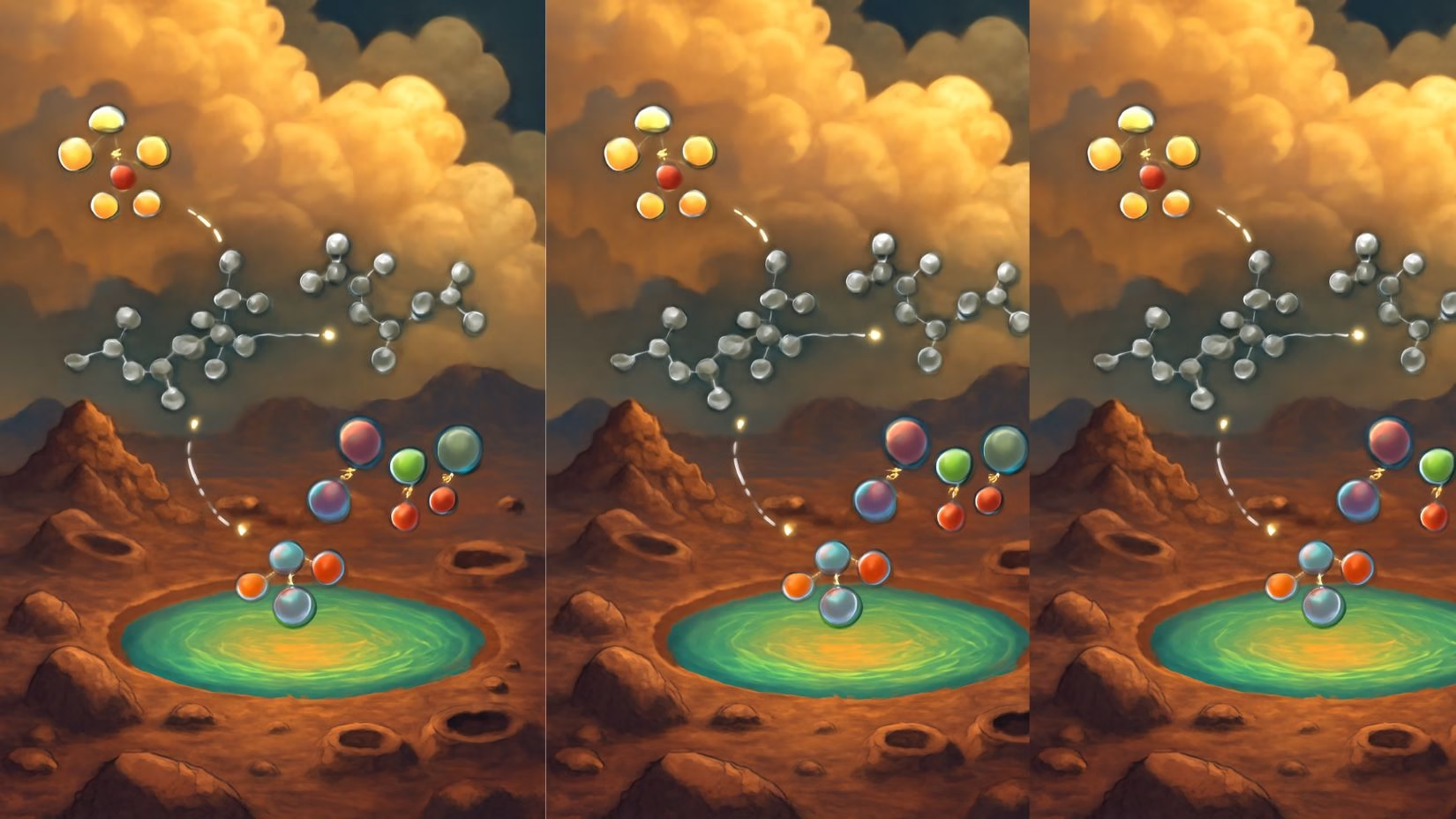Space & Physics
Perseverance Rover: Its Mission objective, scientific gear, and life source
This mission is truly a bridge between humanity’s aspirations and the culmination of a long-awaited dream to place the first humans on another world

From the Archives of EdPublica (formerly The Education Post). First published on March `9, 2021
The Perseverance mission (officially known in NASA as Mars 2020) is the latest since the Curiosity rover that landed at the Gale Crater on Mars in 2013. The Perseverance rover is in a sense, an extension of Curiosity, but it’s to probe specific questions about Mars – to examine organic content on Mars to see if ancient microbial life possibly existed, to understand the climate on Mars and determine if hospitable conditions did exist in the past, and to demonstrate the artificial synthesis of oxygen using the atmospheric carbon dioxide on Mars.
The mission got traction in India after, Dr. Swati Mohan, who was the most visible face at the Mission Control at the Jet Propulsion Laboratory (JPL) at Pasadena, California, shared updates about the rover’s entry, descent and landing on Mars with the rest of her team and the world. The whole landing phase of the mission was viewed by at least 21 million people on YouTube and many more on their television sets. Her Indian ancestry, bought her media attention, appearing on interviews with national television channels. She was the Guidance and Controls Operations Lead of the Perseverance mission.
The Perseverance rover weighs about 1025 kilograms and is the heaviest ever sent to Mars, with its size comparable to a Tesla Model X
Her role was to ensure the rover was properly oriented prior to the beginning of the entry, descent and landing stage of the mission. JPL, where she works, is the technology arm of NASA and is in charge of the creation of rockets and robots including the Mars rovers, and played a key role during the Apollo missions. On 30 th July, 2020, amidst the rampaging COVID pandemic, the Atlas V rocket blasted off from Cape Canaveral, Florida hurtling into space for over 201 days. On 18 th February 2021, after an intense entry and descent phase, Perseverance landing was recorded and broadcasted by NASA to the rest of the world.
Space & Physics
Study Suggests Primordial Black Hole Explosions May Explain Highest-Energy Neutrino Detected
Researchers from MIT propose that a primordial black hole’s final explosion could be responsible for the most energetic neutrino ever observed, potentially marking the first direct evidence of Hawking radiation and shedding light on the nature of dark matter.

A path-breaking study from MIT offers a novel explanation for the most energetic neutrino ever detected: the final explosion of a primordial black hole (PBH). This research, published in Physical Review Letters, presents a compelling theoretical model suggesting that an ancient, microscopic black hole vaporizing just outside our solar system might be the source of this elusive “ghost particle.”
Neutrinos are known for their ghost-like ability to traverse space virtually undisturbed, making them difficult to detect despite being the universe’s most abundant particles. The recently observed neutrino, captured by the Cubic Kilometer Neutrino Telescope (KM3NeT) under the Mediterranean Sea, contained energy levels exceeding anything produced by human-made accelerators.
The MIT team, including lead author Alexandra Klipfel, explains that primordial black holes—hypothetical remnants from the early universe—slowly lose mass through Hawking radiation, emitting an array of particles as they evaporate. This process intensifies as the PBH shrinks, culminating in a violent final burst of energy. “It’s something we can now try to look for and confirm with various experiments,” Klipfel said in a media statement.
Co-author David Kaiser described the challenge: “We don’t have hope of detecting Hawking radiation from stellar black holes, so our best chance lies with tiny primordial black holes.” Their calculations estimate that thousands of such PBHs might explode yearly within the Milky Way, and there’s a roughly 8% chance one occurred close enough to Earth to explain the detected neutrino.
This discovery could represent the first observation of Hawking radiation and provide crucial insights into the mysterious dark matter that comprises 85% of the universe’s matter. However, confirming the theory requires more detections of these high-energy neutrinos.
Kaiser expressed cautious optimism: “If proven, it would validate pivotal aspects of black hole physics and unravel clues about dark matter’s nature.”
Ongoing and future experiments, like those tracking particle remnants from potential PBH explosions, offer hope in this cosmic detective story.
Space & Physics
Cosmic Dust Reveals Secrets of the Milky Way’s Magnetic Fields
Astronomers uncover how interstellar dust grains align with galactic magnetic fields, revealing new insights into star formation and cosmic evolution.

If you’ve ever watched dust twirl in a sunbeam, you’ve seen how small, ordinary specks can tell a bigger story. Out in space, the Milky Way carries its own version of these floating storytellers: interstellar dust grains. Though each one is only a few micrometres wide and made mostly of silicates and carbon, these cosmic crumbs hold the key to how stars, planets, and even galaxies evolve.
Now, a team of astronomers from the Indian Institute of Astrophysics (IIA), Bengaluru, has made a remarkable breakthrough. They’ve gathered the strongest observational evidence yet showing how these dust grains actually line up with invisible magnetic fields stretching across our galaxy.
The search for alignment
This discovery tackles a mystery that has puzzled scientists for decades. Back in 1949, astronomers noticed that starlight looked “polarized”—its vibrations lined up in a single direction—as it passed through space. The best explanation was that elongated dust grains were somehow aligning themselves with the magnetic fields around them. But exactly how they did it has remained an open question—until now.
A peek into a cosmic cradle
To solve the puzzle, researchers looked deep into a massive star-forming cloud called G34.43+0.24, about 12,000 light-years away. Think of it as a giant celestial nursery, filled with dense regions where baby stars—protostars—are still wrapped inside protective cocoons of dust and gas. Among its most famous residents are MM1, MM2, and MM3, all destined to become massive stars.

Using the powerful POL-2 polarimeter on the James Clerk Maxwell Telescope in Hawaii, the team mapped how dust grains in this stellar nursery twisted and turned in response to magnetic fields. What they found was both surprising and elegant: three different alignment processes working simultaneously in the same cloud.
The three cosmic tricks of dust
Here’s how dust grains behave under different cosmic conditions:
- Spinning into Place (RAT-A): Dust grains spin up when exposed to uneven radiation, neatly aligning themselves with magnetic fields.
- Breaking Under Pressure (RAT-D): When blasted by strong radiation from powerful protostars, some grains spin so fast that they break apart, reducing their ability to align.
- Supercharged Alignment (M-RAT): Under the influence of strong magnetic interactions, grains align even more efficiently, creating stronger polarization signals.
In other words, dust can act like a perfect compass, fall apart under stress, or become super-charged field tracers—depending on what’s happening around them.
Why this matters
Understanding how dust aligns isn’t just about grains themselves. It gives scientists new tools to trace cosmic magnetic fields, which are crucial for almost everything in space—from how new stars are born to the way entire galaxies hold their spiral shapes.
In a media statement, Saikhom Pravash, lead author of the study and a PhD researcher at IIA and Pondicherry University, explained: “This work strengthens the observational support for the well-established popular grain alignment theories and makes a significant contribution to the long-standing quest to understand the exact grain alignment mechanisms.”
Co-author Archana Soam added: “It’s the key to tracing interstellar magnetic fields and exploring their influence on star formation.”
The findings, published in The Astrophysical Journal, don’t just solve a long-standing mystery—they lift the curtain on one of the universe’s hidden forces, transforming tiny specks of dust into powerful cosmic storytellers.
Space & Physics
Could Alien Life Thrive in Liquid That’s Not Water? MIT Scientists Propose a Dramatic New Possibility
A special blend of chemicals—known as ionic liquids—can easily form on rocky planets and moons, potentially creating new havens for life in the cosmos

For centuries, the search for life beyond Earth has been soaked in one belief: water is essential. Now, MIT researchers are challenging this planetary doctrine—suggesting that the ingredients for life could thrive in liquids far different from water, and perhaps on worlds much harsher than our own.
In a study published this week in Proceedings of the National Academy of Sciences, the MIT-led team demonstrated that a special blend of chemicals—known as ionic liquids—can easily form on rocky planets and moons, potentially creating new havens for life in the cosmos.
Ionic liquids are a type of salt that stays liquid at temperatures below 100°C and, unlike water, can endure extremes of heat and pressure. In their experiments, the researchers mixed sulfuric acid (often produced by volcanoes) with simple nitrogen-rich organic compounds (found on asteroids and planetary atmospheres). The result: a persistent, stable liquid that doesn’t evaporate even when most of the acid is gone.
Ionic liquids, it turns out, can be friendly to rare biomolecules—like hardy proteins—that can resist breakdown in harsh conditions.
Expanding the habitability zone
“We consider water to be required for life because that is what’s needed for Earth life. But if we look at a more general definition, we see that what we need is a liquid in which metabolism for life can take place,” said Dr. Rachana Agrawal, who led the study at MIT’s Department of Earth, Atmospheric and Planetary Sciences. “Now if we include ionic liquid as a possibility, this can dramatically increase the habitability zone for all rocky worlds.”
The implications are staggering: even on planets that are too hot, or whose atmospheres are too thin for water to exist, stable ionic liquids could form and persist—potentially nurturing forms of alien life, though they may look nothing like Earth’s water-based organisms.
From Venus to beyond
The inspiration came when the team was working to solve a Venus mystery. Venus, shrouded in clouds of sulfuric acid, has long fascinated scientists seeking signs of life. When Dr. Agrawal and her colleagues tried to evaporate sulfuric acid from a solution to isolate organic molecules, a stubborn liquid layer wouldn’t go away. They realized they’d accidentally created an ionic liquid—a discovery that opened new doors in astrobiology.
Dr. Sara Seager, MIT’s Class of 1941 Professor of Planetary Sciences and co-leader of the study, described the breakthrough: “In high school, you learn that an acid wants to donate a proton. Oddly enough, we knew from our past work that sulfuric acid (the main component of Venus’ clouds) and nitrogen-containing compounds have this unique chemistry—one gives up a hydrogen, one takes it. It’s like one person’s trash is another person’s treasure.”
After testing over 30 nitrogen compounds with sulfuric acid, the scientists confirmed that ionic liquids reliably form under a wide range of conditions—even on basalt rocks similar to those on planetary surfaces.
“We were just astonished that the ionic liquid forms under so many different conditions,” Seager said. “If you put the sulfuric acid and the organic on a rock, the excess acid seeps into the pores, but you’re still left with a drop of ionic liquid. Whatever we tried, ionic liquid still formed.”
Their experiments showed that this process happens up to 180°C and at pressures far below Earth’s, broadening the realm of possible habitable worlds.
New oases in the universe
Imagine a rocky world, hotter than Earth, where volcanic sulfuric acid flows over pockets of organic matter—ingredients for life scattered across the solar system. According to Dr. Seager, these spots could become long-lived pools of ionic liquid, tiny oases for simple, exotic life forms.
“We’re envisioning a planet warmer than Earth, that doesn’t have water, and at some point in its past or currently, it has to have had sulfuric acid, formed from volcanic outgassing,” Seager explained. “This sulfuric acid has to flow over a little pocket of organics. And organic deposits are extremely common in the solar system.”
Just how far could this discovery go? The team says much more work lies ahead. They will now focus on what kinds of molecules—and what forms of life—could actually flourish in these unearthly environments.
“We just opened up a Pandora’s box of new research,” Seager said. “It’s been a real journey.”
Contributors to the study include: MIT scientists Sara Seager, Rachana Agrawal, Iaroslav Iakubivskyi, Weston Buchanan, Ana Glidden, Jingcheng Huang; Maxwell Seager (Worcester Polytechnic Institute); William Bains (Cardiff University); Janusz Petkowski (Wroclaw University of Science and Technology).
-

 Space & Physics6 months ago
Space & Physics6 months agoCould dark energy be a trick played by time?
-

 Women In Science6 months ago
Women In Science6 months agoNeena Gupta: Shaping the Future of Algebraic Geometry
-

 Space & Physics5 months ago
Space & Physics5 months agoSunita Williams aged less in space due to time dilation
-

 Earth5 months ago
Earth5 months ago122 Forests, 3.2 Million Trees: How One Man Built the World’s Largest Miyawaki Forest
-

 Space & Physics5 months ago
Space & Physics5 months agoDid JWST detect “signs of life” in an alien planet?
-

 Learning & Teaching5 months ago
Learning & Teaching5 months agoHow Understanding Individual Learning Styles Can Transform Education
-

 Space & Physics4 months ago
Space & Physics4 months agoIs Time Travel Possible? Exploring the Science Behind the Concept
-

 Earth6 months ago
Earth6 months agoHow Tuna and Swordfish Hunt in the Deep; MIT Oceanographers find the answer


















